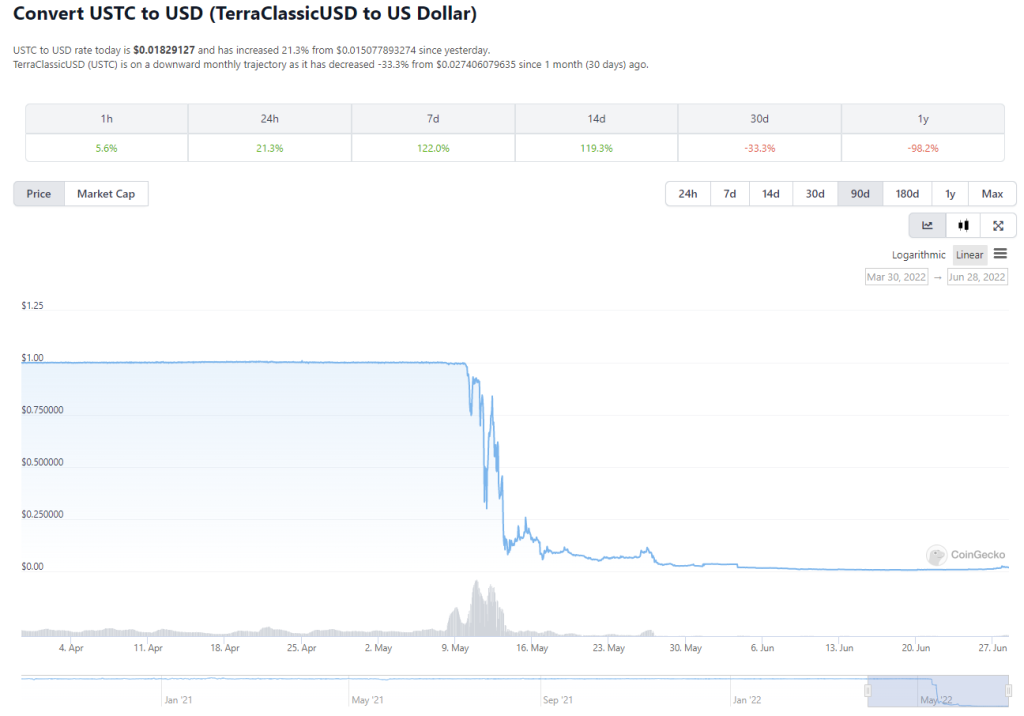Without a doubt, stablecoins are the bedrock of the crypto world. The price stability of stablecoins makes it a popular choice as a medium of exchange. But is that all there is to stablecoins? Or does it have the potential for something bigger?
Point Zero Forum is an international fintech conference in Zurich from 21 to 23 June 2022. The exclusive invite-only event was co-organised by Singapore and Switzerland.

Jo Yeo, Head, Payments Development and Data Connectivity, Monetary Authority of Singapore, was the moderator, and Jason Thompson, the CEO, of Partior Pte, panelled the segment on the tokenisation market opportunity. Ltd, Paul Grewal, Chief Legal Officer of Coinbase and Richmond Teo, Co-founder & CEO Asia, Paxos
Is Algo stable dead?

Launched in 2018, UST was one of the largest stablecoin in market cap. The then US$18 billion market cap algorithmic stablecoin started to crash and burn, bringing down the whole Terra ecosystem. This catastrophic event begs the question: is algo stable dead?
The short answer is no. This will not be the last attempt for an algo stablecoin that is independent and not linked to any traditional finance service/institution.
It will take a few iterations and reconfiguration to find the perfect formula for a working algo stablecoins that would not break in the face of adversity.
I think there will be a place for algo stable as the current decentralised stablecoins in the market are capital inefficient, and the centralised stablecoins don’t embody the spirit of decentralisation.
From the looks of things, it might take a while before algo stable take off as the market is still shaken from the UST saga.
Stablecoins regulation

Depending on how the stablecoin operates, some would require a more comprehensive regulation, while others need a more robust regulation.
For instance, reserve-backed stablecoin needs to disclose their reserve so market participants know what the reserves are and have confidence that what they buy is backed by reserves.
Too many rules and regulations will hurt innovations. So other than just simply regulating the industry, regulators can work on educating consumers and investors.
Industry participants can work with regulators to better inform market participants on how the particular coin work and, if things go south, what rights they have.
I do agree that education is critical. Only so many regulators can do this, and there is no better way to protect yourself than by educating yourself.
By learning and understanding more about crypto, it will be easy to differentiate the good from the bad. Users can spot telltale signs of a destructive project by evaluating the tokenoimics, the team, and the product itself.
Chaindebrief believes learn2earn might be the next wave in ushering adoption from the masses. Education is the cornerstone of every successful industry. We want to extend our resources to anyone keen on honing knowledge, from beginners to advance.
You can check out our new earn and learn program – Nexus.
What’s next for stablecoins?

There is an increasing trend of using stablecoins for trading and instant settlement purposes. But the original use case of stablecoins was for payment purposes. There is tremendous headroom for growth in stablecoins to be used for payment purposes.
This bear market also encourages builders to start building toward stablecoins use cases and not let it just be purely used for trading. There are also positive signs in the market that traditional companies are interested in adopting stablecoins as payment options.
Other than the top two stablecoins, USDT and USDC, I think DAI would also be accepted as a payment option. DAI has been around for the longest time, and we have seen how DAI held its peg even in highly volatile market conditions.
While many protocols broke down in the recent market crash, MakerDAO managed to work like its intended and liquidated those long positions to keep the USD peg. DAI might be capital inefficient, but it will still be one of the critical pillars of decentralisation.
Closing thoughts
At the end of the day, I believe stablecoins will pave the way to crypto mainstream adoption. Stablecoins being accepted by mainstream merchants would start the ball rolling and it would snowball into widespread adoption by other industries.
Regardless, stablecoins will continues to deliver real-world utility and it would play a key role in crypto adoption.
[Editor’s Note: This article does not represent financial advice. Please do your own research before investing.]
Featured Image Credit: Chaindebrief
Also Read: Building The Foundations Of An Open Metaverse With Animoca Brands CEO



































